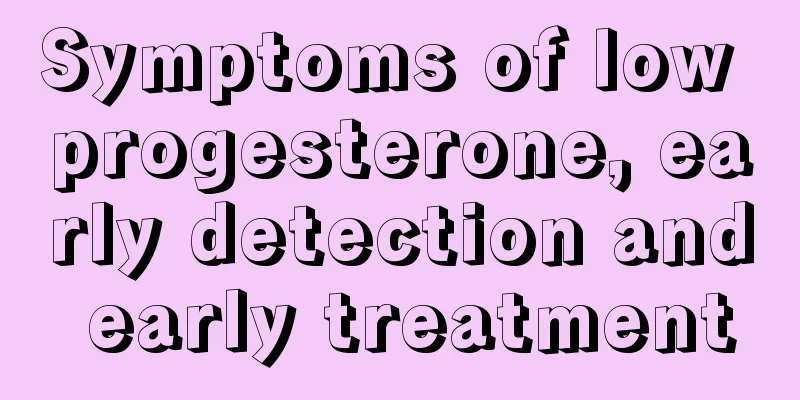Are endometrial adhesions serious?

|
The health of the endometrium has a great impact on women's health and fertility. However, in real life, many people have certain health problems with their endometrium. For example, endometrial adhesions is a very common endometrial disease. The severity of this disease is also high. Next, I will introduce you to some relevant knowledge about endometrial adhesions! 1. Causes Endometrial damage is a necessary condition for intrauterine adhesions, and its causes are miscarriage, infection and iatrogenic injury. (1) During pregnancy, the uterus becomes fragile, and the endometrium and the underlying layer are more easily injured; after pregnancy surgery (including abortion, curettage, etc.), the decrease in estrogen levels affects endometrial hyperplasia. Uterine injury during pregnancy (accounting for 90%), including abortion (induced abortion, incomplete/missed abortion), postpartum hemorrhage, retained placenta, cesarean section and gestational trophoblastic disease trauma. (2) Intrauterine adhesions may also occur during other non-pregnancy periods, such as during diagnostic curettage. Occurs during the non-pregnancy period: after curettage, myomectomy, cervical biopsy or polypectomy, and after radium irradiation. Patients who have undergone hysteroscopic surgery, such as mediastinectomy, submucosal myomectomy, bilateral uterine artery embolization, and uterine artery ligation for postpartum hemorrhage. (3) Infection: The most common infection is endometrial tuberculosis. Chronic or subacute endometritis may also lead to intrauterine adhesions. (4) Others: Related to abnormal development of the Müllerian duct, especially septate uterus. (5) Genetic factors: The disease is related to genetic factors. II. Treatment Hysteroscopy is currently an effective means of treating intrauterine adhesions and is also the gold standard for diagnosis. It is a invasive surgery that reduces complications. Complications during hysteroscopy may include perforation, bleeding, shock, and even death. The surgery requires evaluation of the thickness, type, and blood flow of the endometrium, and assessment of the entire length of the cervical canal, internal cervical os, uterine cavity, and fallopian tubes. If necessary, perform laparoscopic curettage. 1. Hysteroscopic treatment Mild membranous adhesions can be bluntly separated (pushing, pushing, tearing) with the tip of the hysteroscope; dense adhesions can be separated with micro scissors, forceps, needle electrode electroresection or laser surgery; severe adhesions: because perforation and bleeding are prone to occur at the edges or fibromuscular adhesions, they are usually performed under laparoscopy or ultrasound monitoring. 2. Laparotomy Transabdominal hysterotomy for the treatment of intrauterine adhesions is rarely used now unless hysteroscopic separation is difficult. Prevention of intrauterine adhesions after surgery: Since intrauterine adhesions are prone to recurrence, especially severe ones, the recurrence rate can be as high as 62.5%, and repeated surgery and separation effect evaluation are often required. Therefore, preventing recurrence is the key to successful treatment. ①Intrauterine contraceptive device placement: Routine intrauterine contraceptive device placement after surgery is a widely used and effective method to prevent adhesions, and is generally placed for at least 3 months. ② Placement of balloon catheter: The water-filled balloon acts as a barrier in the uterine cavity, effectively separating the front and back, upper and lower, and left and right side walls of the uterus, and effectively preventing re-adhesion of the uterine cavity. ③Sodium hyaluronate: Sodium hyaluronate has a mechanical barrier effect and reduces the occurrence of intrauterine adhesions. ④ Medical chitosan and amniotic membrane transplantation. ⑥Drugs: mainly to continuously stimulate endometrial growth such as estrogen-progesterone cyclical therapy, vasodilators, growth hormone, etc. Prognosis Intrauterine adhesions are a common disease throughout the world. Hysteroscopic treatment is currently an effective treatment, but the treatment of severe adhesions is still difficult. After successful separation, attention should be paid to postoperative care to avoid re-adhesion, which can generally be improved. |
<<: How to reduce belly fat for women
>>: What are the causes of vaginal candidiasis?
Recommend
Symptoms of vitamin B1 deficiency in women
Vitamin B1 is water-soluble. Except for intestina...
Are there any signs or reactions of pregnancy?
Due to lack of experience, many women do not feel...
What should I do if my period is still not over after 11 days?
Women's menstrual cycle is generally around 2...
Will ovulation occur during menstruation? Can you get pregnant during menstruation?
A woman's ovulation period is generally about...
How long after angiography can I have a baby?
Fallopian tube obstruction is a common cause of f...
Have you been persuaded to drink during the Chinese New Year? This type of people who drink have a higher risk of cancer
During the Spring Festival Friends and family gat...
What are the effects of drinking alcohol during early pregnancy?
Most women who are pregnant in the early stages o...
What to do if uterine adhesions occur after miscarriage
After a miscarriage, a woman's body is relati...
Clinical manifestations and treatment measures of uterine atony
We all know that the main force of labor is uteri...
Should I lie flat or on my side after egg retrieval?
For some friends who need to do test-tube baby, e...
White discharge from the vulva
Gynecological diseases are really painful for wom...
What is yellow vaginal discharge?
What is yellow vaginal discharge? Yellow vaginal ...
Special medicine for fishy smell of leucorrhea
Many women have a strong smell of vaginal dischar...
How to deal with yellow bean curd-like leucorrhea
Leucorrhea is indeed a relatively private issue i...
What is the concept of photosynthesis? Why did photosynthesis choose the green majority?
Photosynthesis is the process by which producers ...









